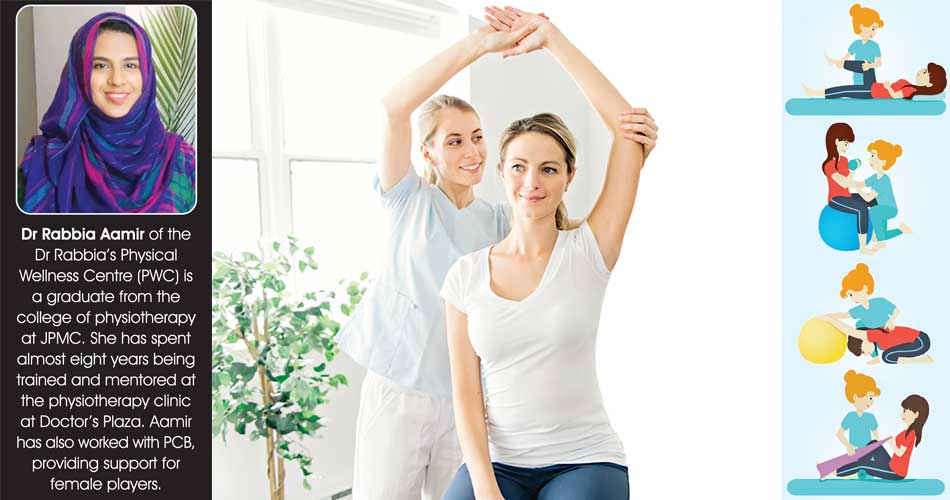Salt therapy – All you need to know
- 24 Feb - 01 Mar, 2024
In conversation with MAG, Dr Rabbia Aamir shares what physical wellness is, why it’s important, and how to cultivate it. Tag along as we connect with her.

Why did you choose physiotherapy as a career? Has it been rewarding?
I never planned on becoming a physiotherapist. It was just one of my friends who wanted to be a physiotherapist and she just wanted me to accompany her in the entry test and I agreed. We both got selected in three different universities and I was overwhelmed. On the very first day of my university I was convinced that this is something that I really want to do and since then I was hooked.
How does it feel to be able to assist in people’s healing process?
It feels great when a patient comes to you and tells you they had pain since a number of years, or that they couldn’t play a certain sport and now they can. It brings you joy, a kind of personal satisfaction and keeps you motivated.
What inspired you to establish Dr Rabbia’s Physical Wellness Centre?
My partner Saman Ghani Khan was my patient for a year. During the treatment we used to have a chat and I used to tell her about physical wellness and how important it is and although, she is a journalist by profession, she is also into fitness and training. So, one fine day last year we decided that we can establish a wellness centre together and we will be partners and six weeks later we had PWC. And the idea behind PWC was to establish a physiotherapy clinic which won’t be just a physiotherapy clinic but also a wellness centre where people will be more aware of their physical wellness so that they can prevent any chronic illnesses, or the old age problems of back pains or knee pains.
Do you practice manual therapy techniques or rely on machines?
We do practice manual therapy and we have some modalities as well, but our main goal is to let people believe what their bodies are capable of doing and let them be more aware of their bodies. So, we prefer manual therapy, but modalities are there too, we do take help from them.
How many visits does a patient normally need to completely recover?
It depends on the condition and on the patient as well. My idea is to let the body heal itself. We don’t call the patients regularly, we call them twice a week usually so that their body can self heal and they remain motivated to exercise.
We’ve all heard that physical therapy is supposed to be painful. Myth or reality?
People often think that physiotherapy is a painful procedure and many people also say “no pain, no gain”, but it’s not like that. Physiotherapy can challenge you physically but it will make you feel better after every session. During the session you will feel some discomfort or soreness but the main object is to heal within your own pain threshold.
What are some light exercises you would suggest for people in their 20s and 40s?
Normally, students, career women and men sit a lot. There should be some bodily movement after every few hours. Stand up and walk after every two hours at work, use the stairs instead of an elevator. Do some basic exercises like computer desk stretches, walking, running, cycling, recreational activities; they all contribute to your physical wellness.
Does physical therapy actually provide an alternative to surgery?
Yes, it can provide an alternate to surgery in some cases. Basically, there are still many orthopedic surgeons and neurosurgeons who don’t know much about physiotherapy, so they don’t guide the patients a lot and prefer surgery as the first option. Patients should always choose physiotherapy as their first option.
Most people follow the internet to perform therapy at home without the guidance of a licensed physical therapist. Are there any risks involved in performing it on your own?
Yes, if you are practicing physiotherapy by watching videos online there is nobody to check your alignment and your posture. Do not rely on the internet for your physical wellness.
COMMENTS